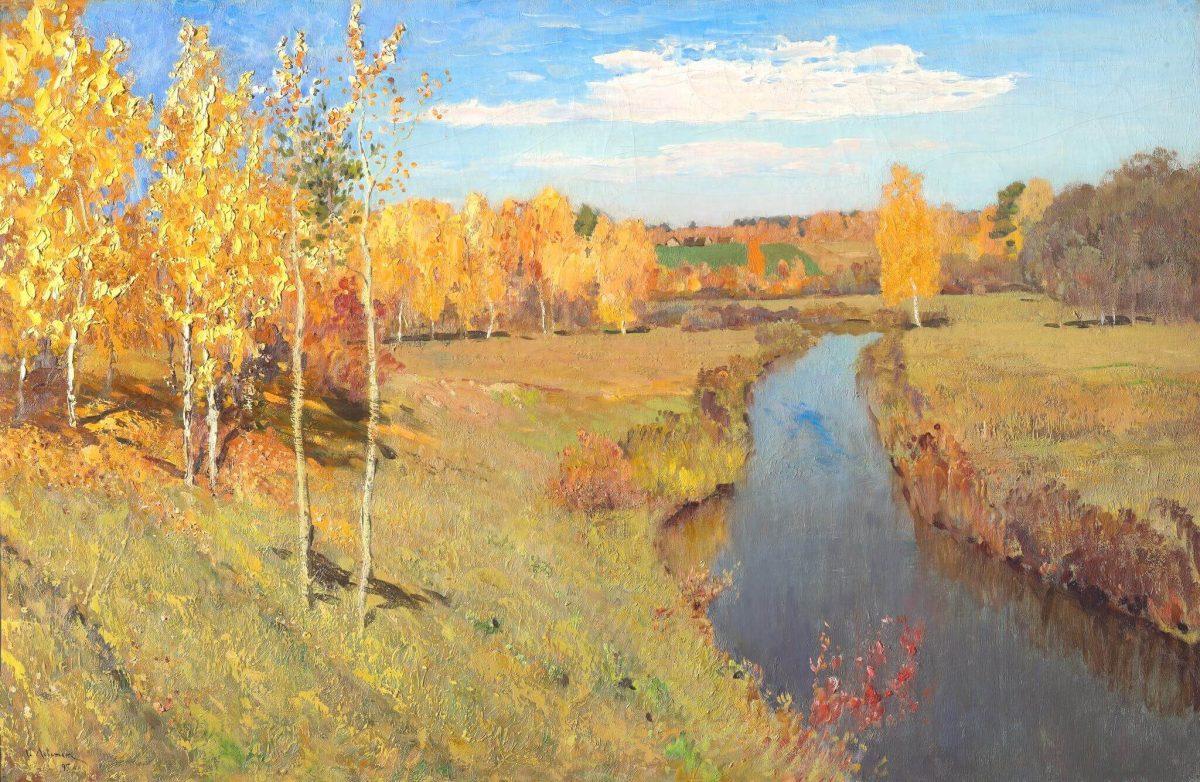
Pictures of Levitan. 5 masterpieces of the artist-poet
Contents:
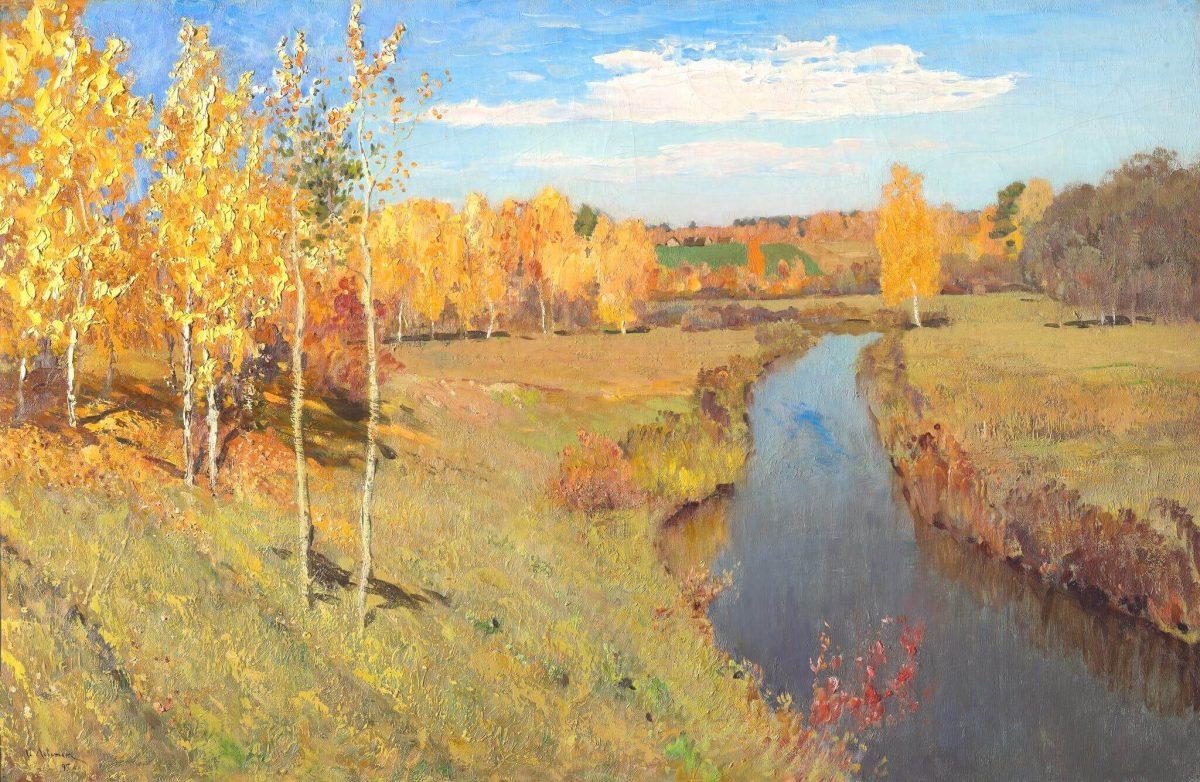
It is said that Isaac Levitan was a melancholic. And his paintings are a reflection of the artist's anxious and rushing soul. So how can one explain such a number of major paintings by the master?
And even if we take Levitan's more minor paintings, how does he manage to keep our attention? After all, they have almost nothing! Except perhaps a few thin trees and water with the sky on three-quarters of the canvas.
They also say that Levitan created lyrical, poetic paintings. But what does it mean? And in general, why are his landscapes so memorable? It's just trees, just grass...
Today we are talking about Levitan, about his phenomenon. On the example of five of his outstanding masterpieces.
Birch Grove. 1885-1889
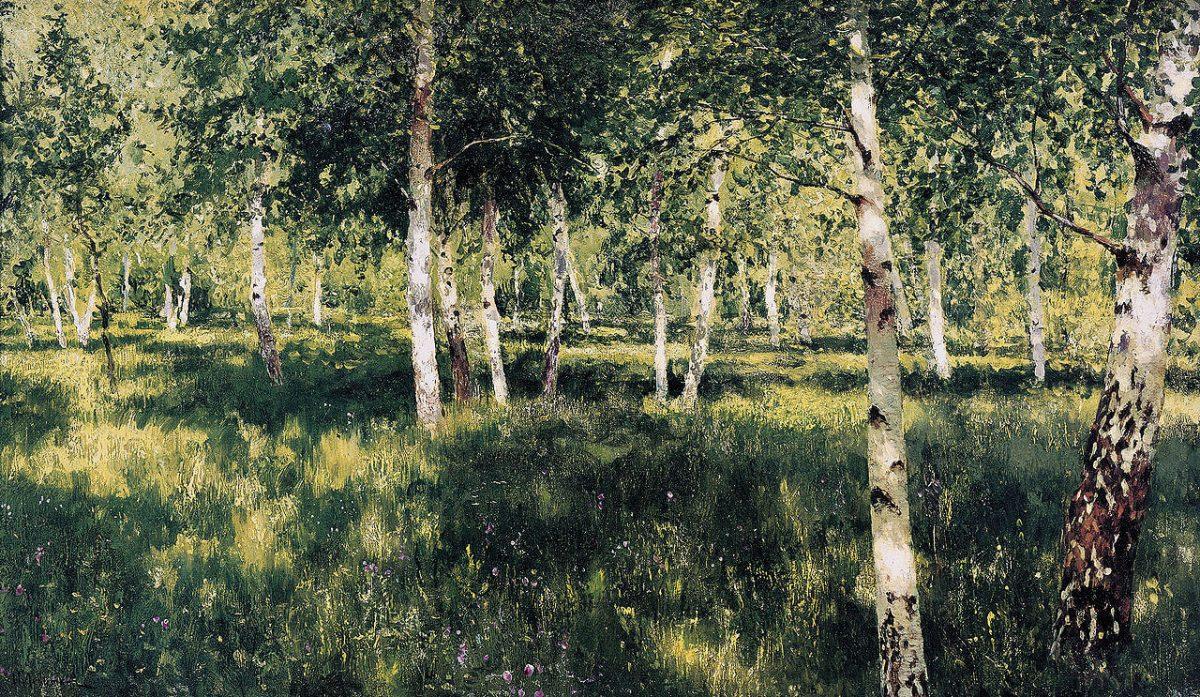
Summer sun rays blend beautifully with the greenery, forming a yellow-white-green carpet.
An unusual landscape for Russian artists. Too unusual. Real impressionism. Lots of sun glare. Air flutter illusion.
Let's compare his painting with Kuindzhi's Birch Grove.

At Kuindzhi we see a low horizon. The birches are so huge that they do not fit into the picture. Wherein the line prevails - all the details are clear. And even the highlights on the birches are well defined.
Therefore, a general impression of majestic, monumental nature is created.
In Levitan, we see a higher horizon, the absence of the sky. The line of the drawing is less pronounced. The light in his picture feels free, laying down with a lot of highlights on the grass and trees.
At the same time, the artist also “cuts off” the birches with a frame. But for a different reason. The focus is down to the grass. Therefore, the trees did not fit completely.
Literally, Levitan has a more down-to-earth view of space. Therefore, his nature looks everyday. She wants to enjoy every day. There is no solemnity of Kuindzhi in it. It brings only simple joy.
This is indeed very similar to the landscapes of the French Impressionists, which depicted the beauty of everyday nature.
But despite the similarities, in one Levitan was very different from them.
It seems that he painted the picture quickly, as is customary among the Impressionists. For 30-60 minutes, while the sun is playing with might and main in the foliage.
In fact, the artist wrote the work for a long time. Four years! He began work in 1885, in the area of Istra and New Jerusalem. And he graduated in 1889, already in Plyos, in a birch grove on the outskirts of the town.
And it is surprising that the picture, painted in different places with such a long break, has not lost the feeling of the “here and now” moment.
Yes, Levitan had an incredible memory. He could return to experiences he had already lived and seemed to relive them with the same force. And then from the heart he shared these impressions with us.
Golden autumn. 1889
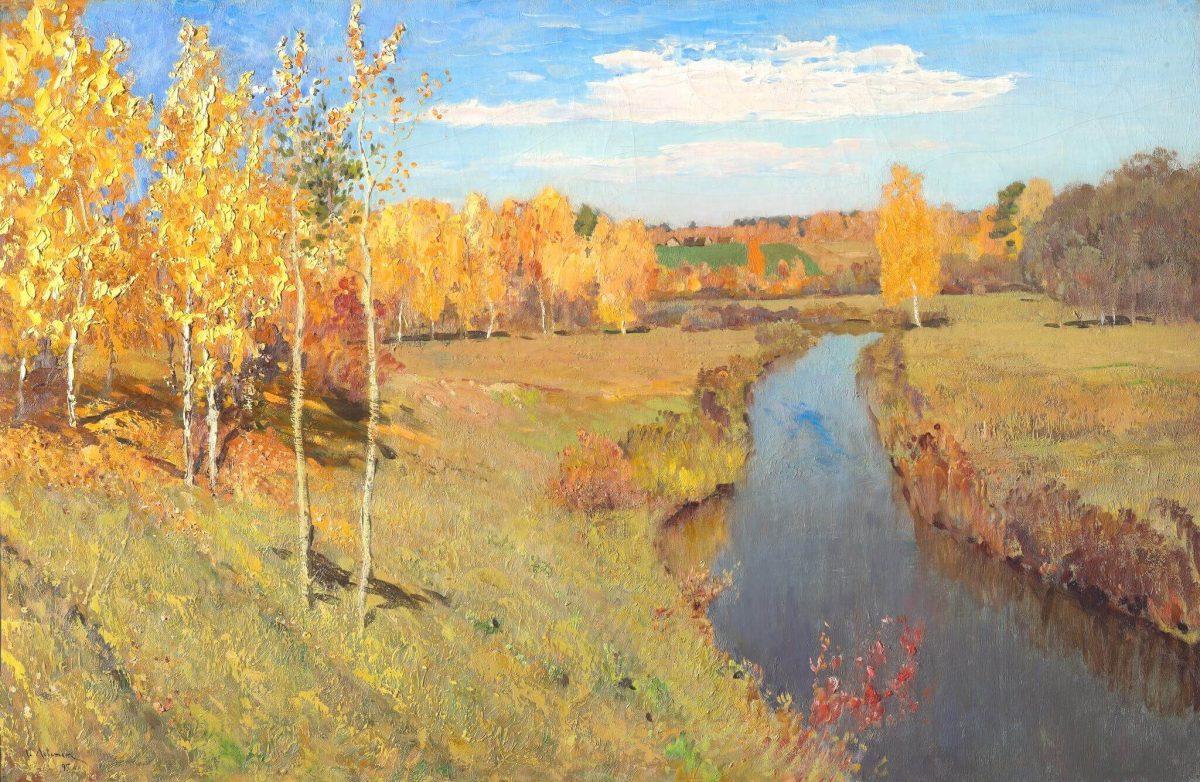
Autumn Levitan flashed the brightest color. Plus, the clouds cleared up nicely. But a little more - and the wind will quickly blow away the leaves and the first wet snow will fall.
Yes, the artist managed to capture autumn at the peak of its beauty.
But what else makes this Levitan painting so memorable?
Let's compare it with Polenov's work on the theme of autumn.

In Polenov, we see more halftones in autumn foliage. Levitan's color chord is monotonous. And most importantly - it is brighter.
In addition, Polenov imposes a thin layer of paint. Levitan, on the other hand, uses very pasty strokes in places, which makes the color even more saturated.
And here we come to the main secret of the picture. The bright, warm color of the foliage, enhanced by a thick overlay of paint, contrasts with the very cold blues of the river and sky.
This is a very strong contrast, which Polenov does not have.
It is this autumn expressiveness that attracts us. Levitan seemed to show us the soul of autumn, warm and cold at the same time.
March. 1895
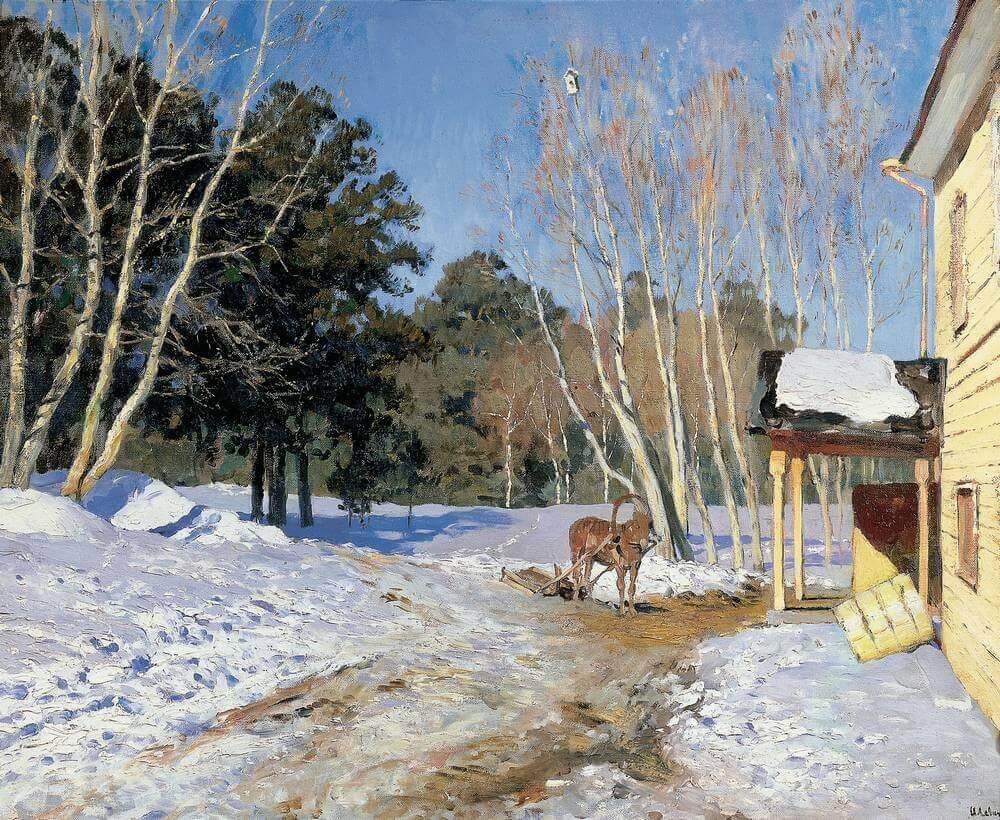
Bright cloudless sky. And under it is not quite white snow, too bright glare of the sun on the boards near the porch, the bare ground of the road.
Yes, Levitan definitely managed to convey all the signs of the imminent change of seasons. Still winter, but interspersed with spring.
Let's compare "March" with Konstantin Korovin's painting "In Winter". On both snow, a horse with firewood, a house. But how different are they!
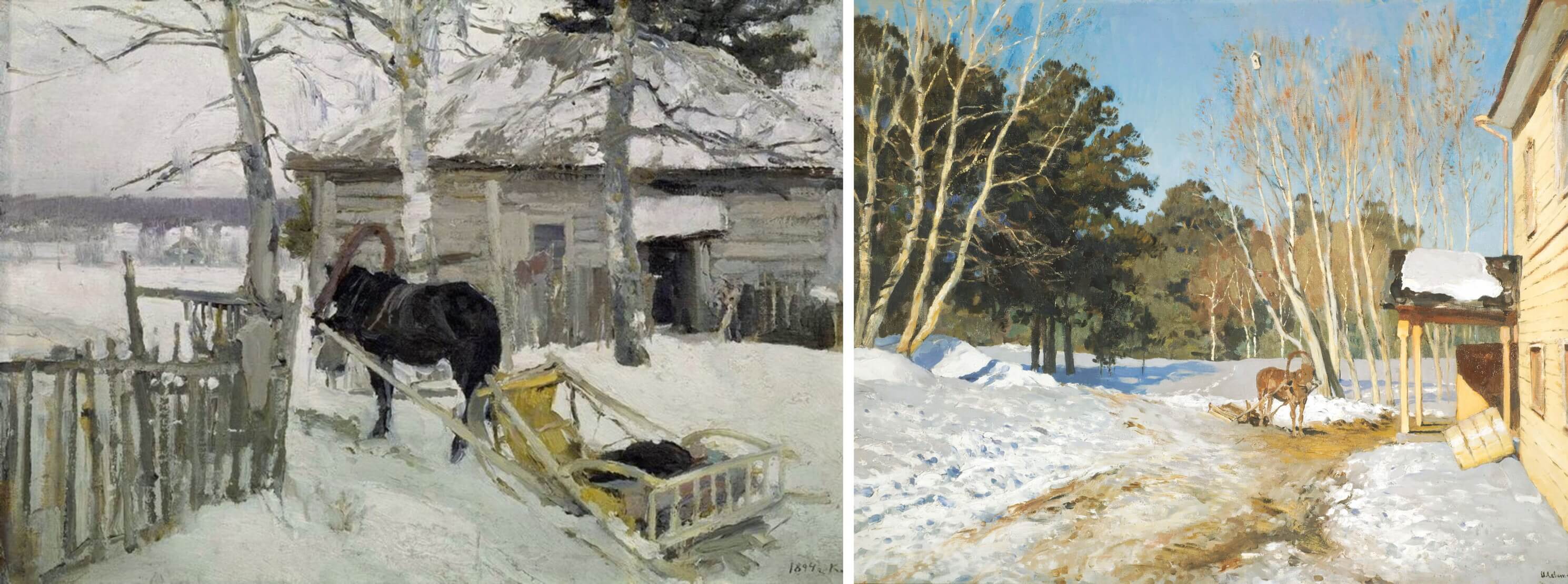
The ocher and blue shades of Levitan make the picture major. Korovin has a lot of gray. And only the mustard shade of the firewood brings some revival.
Korovin even has a black horse. Yes, and the muzzle is turned away from us. And now we already feel an endless series of dark cold winter days. And even more we feel the joy of the arrival of spring at Levitan.
But not only this makes the picture "March" so memorable.
Please note: it deserted. However, people are present invisibly. Someone just left a horse with firewood at the entrance just half a minute ago, opened the door, but never closed it. Apparently he didn't go for long.
Levitan did not like to write people. But almost always indicated their presence somewhere nearby. In "March" even in the literal sense. We see footprints leading from the horse towards the forest.
It is no coincidence that Levitan uses such a technique. Even his teacher Alexei Savrasov insisted on how important it is to leave a human mark in any landscape. Only then the picture becomes alive and multi-layered.
For one simple reason: a boat near the shore, a house in the distance, or a birdhouse in a tree are objects that trigger associations. Then the landscape begins to "talk" about the fragility of life, home comfort, loneliness or unity with nature.
Have you noticed signs of the presence of a person in the previous picture - "Golden Autumn"?
At the whirlpool. 1892
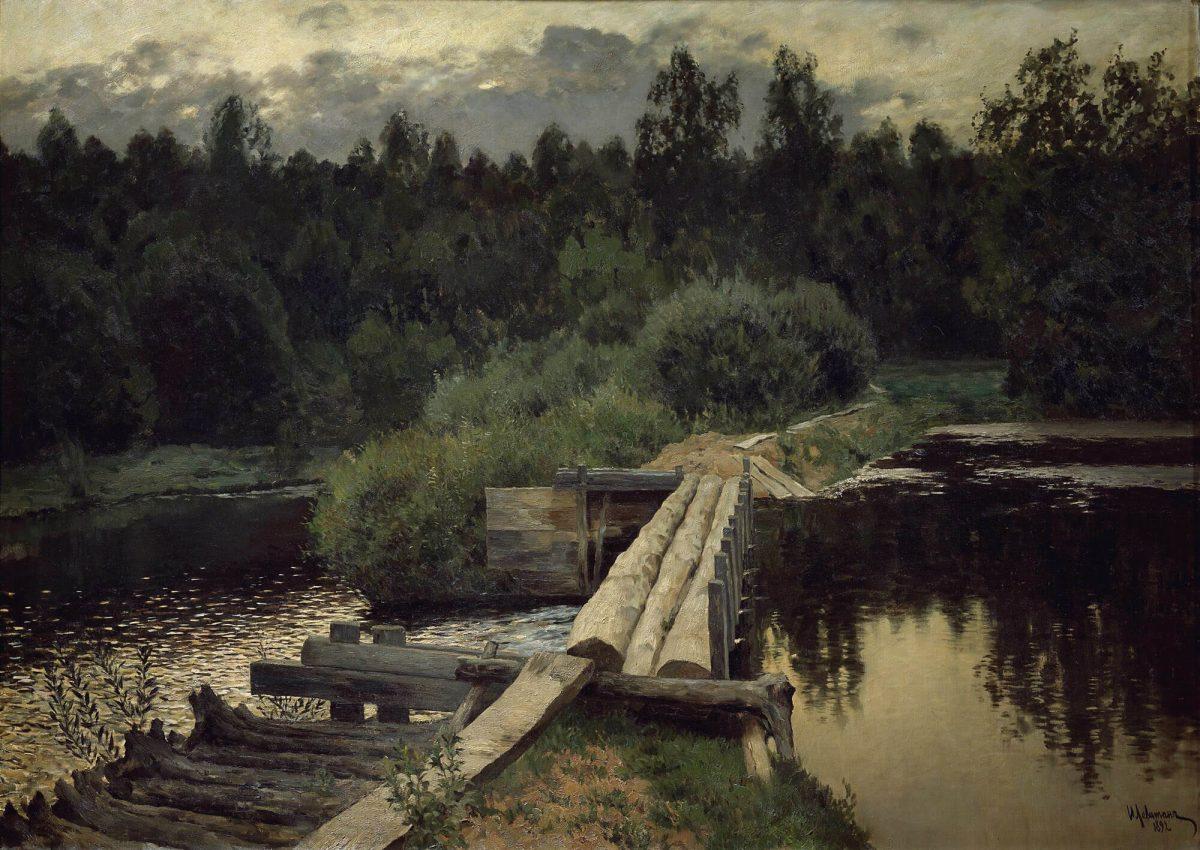
Before that, we looked with you the most major landscapes of Levitan. But he also had a lot of minor ones. Including the picture "At the whirlpool".
Considering this particular landscape of Levitan, it is easiest to feel sadness, melancholy and even fear. And this is the most amazing thing. After all, in the picture, in fact, nothing happens! There are no people. Not the more goblin with mermaids.
What makes the landscape so dramatic?
Yes, the picture has a dark color: an overcast sky and a dark forest. But all this is enhanced by a special composition.
A path is drawn, which, as it were, invites the viewer to walk along it. And now you are already mentally walking along a shaky board, then along logs slippery from moisture, but there is no railing! You can fall, but deep: the pool is the same.
But if you pass, then the road will lead into a dense, dark forest.
Let's compare "At the Pool" with the painting "Forest Distances". This will help us feel all the anxiety of the picture in question.
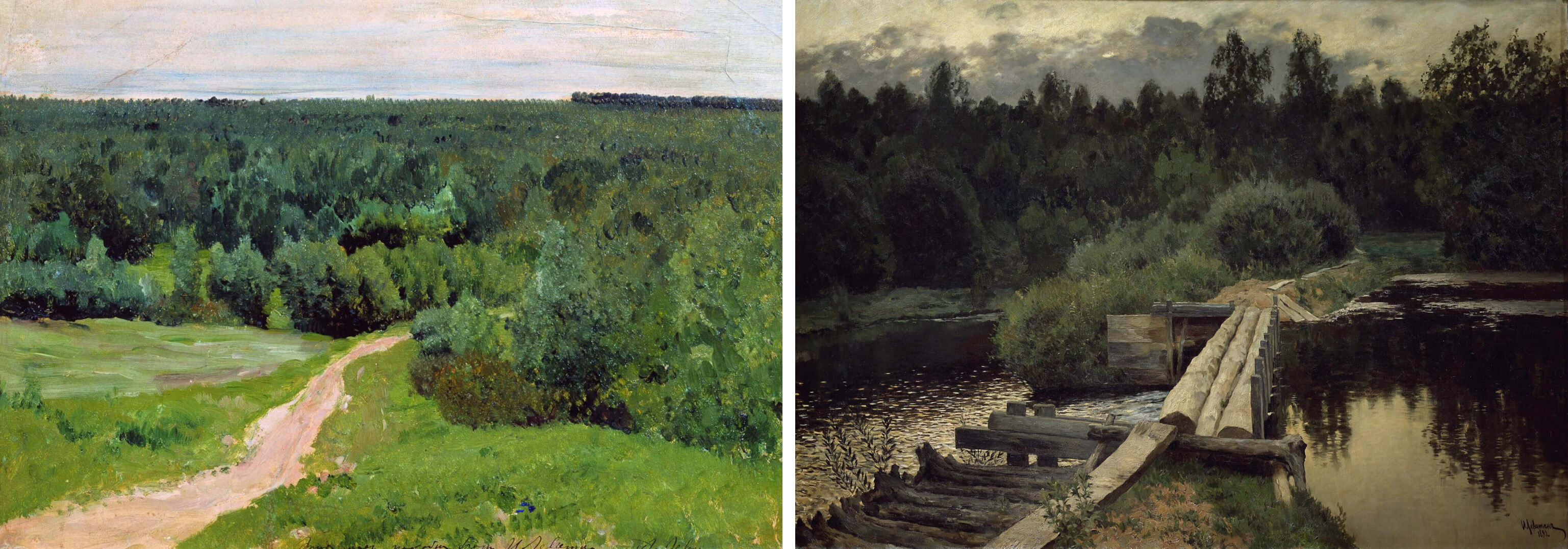
It seems that the path also lures us into the forest and in the picture on the left. But at the same time we look at it from above. We feel the kindness of this forest dutifully sprawling under the high sky.
The forest in the painting “At the pool” is completely different. He seems to want to absorb you and not let go. All in all, worrying...
And here another secret of Levitan is revealed, which helps to make landscapes so poetic. The painting "At the pool" easily answers this question.
Anxiety can be portrayed in the forehead, with the help of an emotionally depressed person. But it's like prose. But the poem will talk about sadness with hints and the creation of non-standard images.
So the picture of Levitan only with special hints expressed in the details of the landscape leads to this unpleasant sensation.

Spring. Big water. 1897
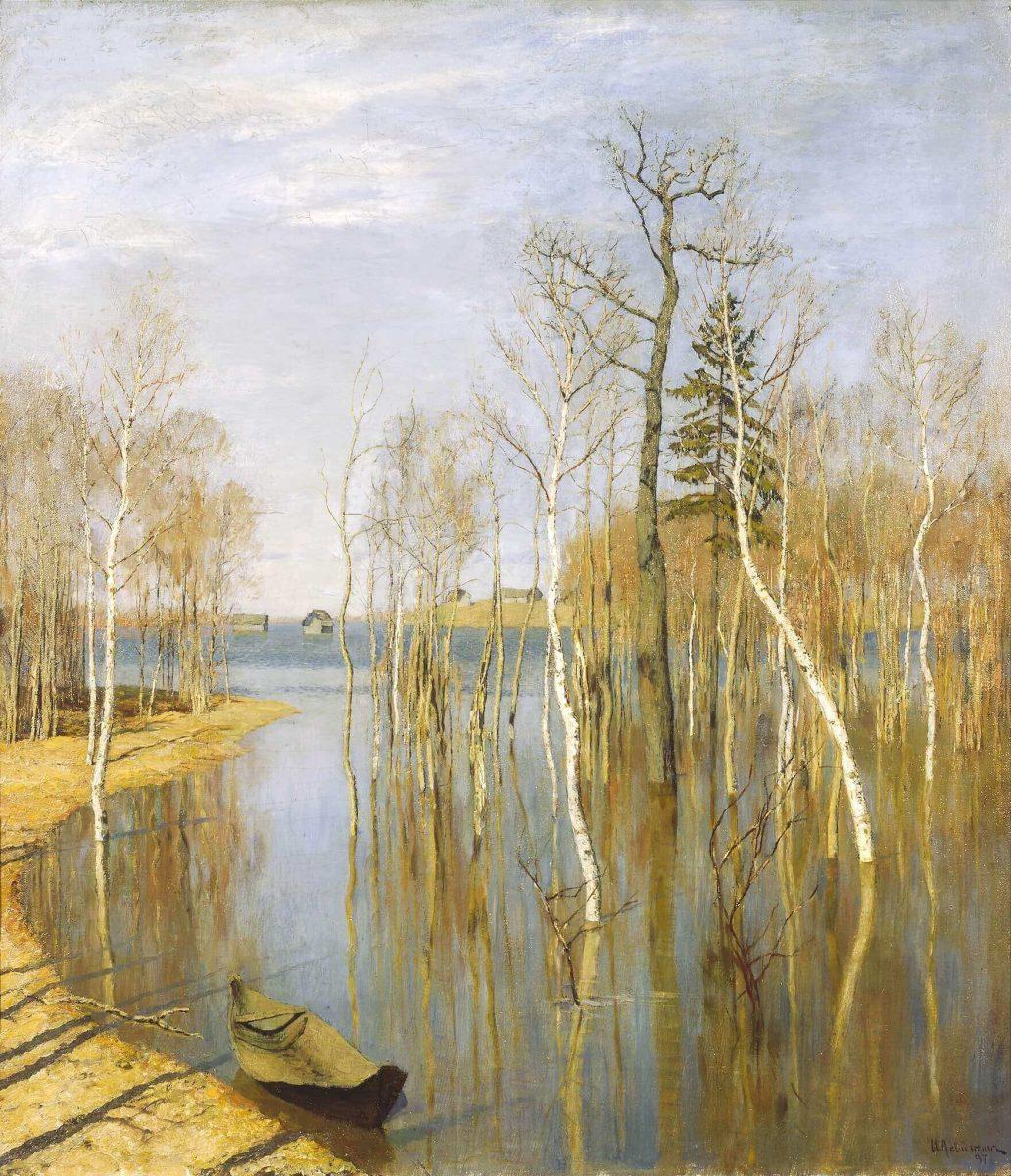
The space of the painting “Spring. Big Water" cut through the lines of thin trees and their reflections in the water. The color is almost monochrome, and the details are minimal.
Despite this, the picture is also poetic and emotional.
Here we see the ability to say the main thing in a couple of words, to play a great work on two strings, to express the beauty of the meager Russian nature with the help of two colors.
Only the most talented masters can do this. So could Levitan. He studied under Savrasov. He was the first in Russian painting who was not afraid to depict the meager Russian nature.
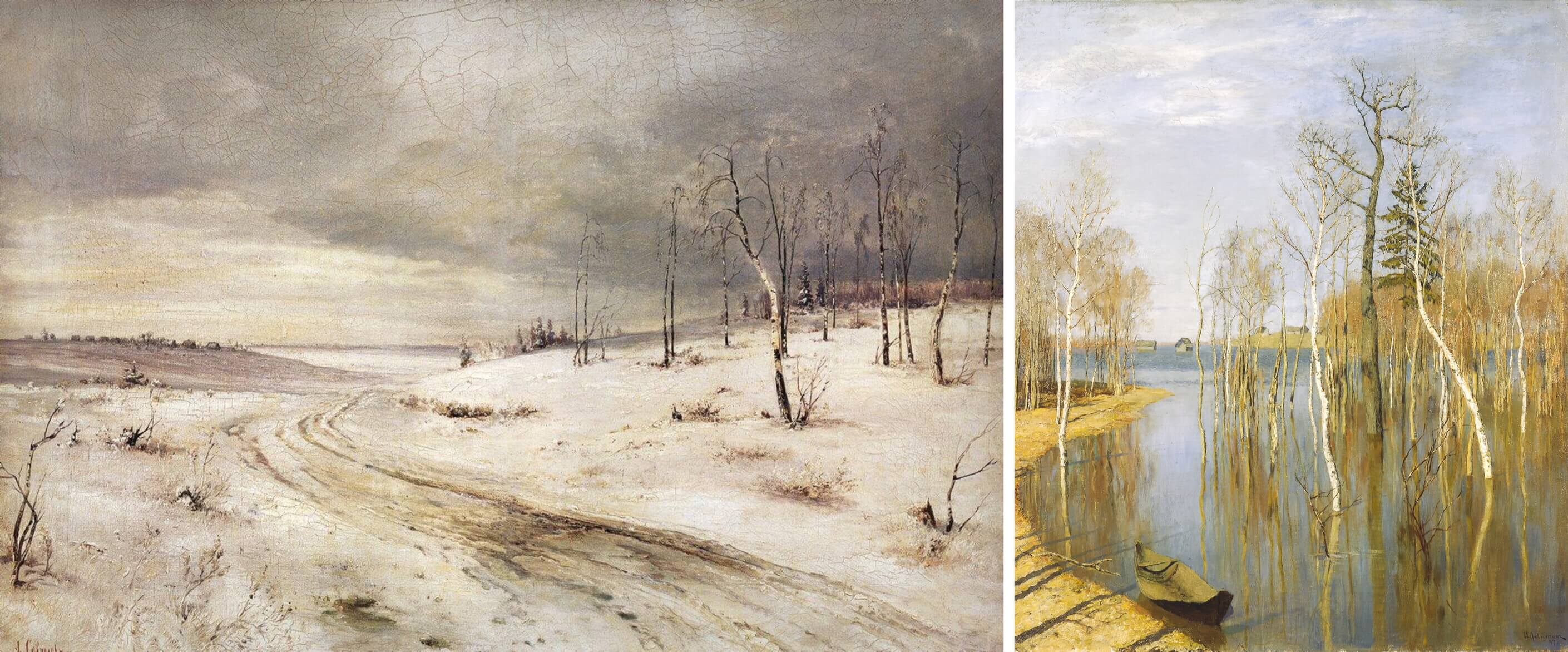
So what is the secret of the attractiveness of Levitan's "Spring"?
It's all about opposition. Thin, very thin trees - against such elements as a strong flood of the river. And now there is a nagging feeling of anxiety. In addition, in the background, water flooded several sheds.
But at the same time, the river is calm and one day it will retreat anyway, this incident is cyclical and predictable. Anxiety doesn't make sense.
This, of course, is not the pure joy of the Birch Grove. But not the all-consuming anxiety of the painting "At the Pool". It's like the everyday drama of life. When the black stripe is certainly replaced by white.
***
Summing up about Levitan
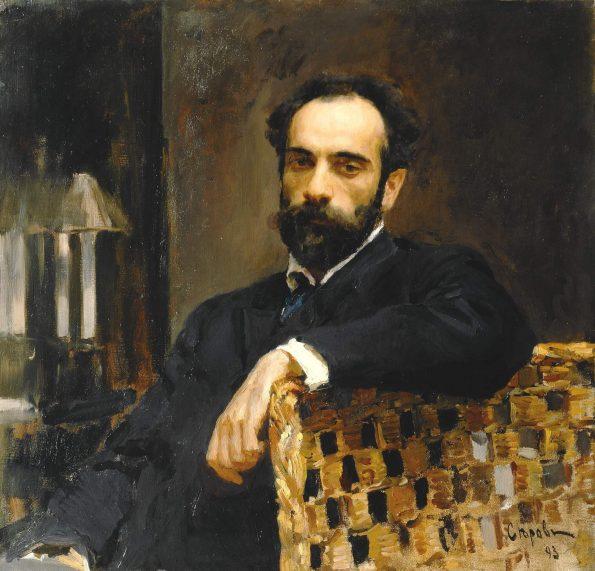
Levitan was not an impressionist. Yes, and worked on the paintings for a long time. But he willingly used some of the pictorial techniques of this direction, for example, wide pasty strokes.
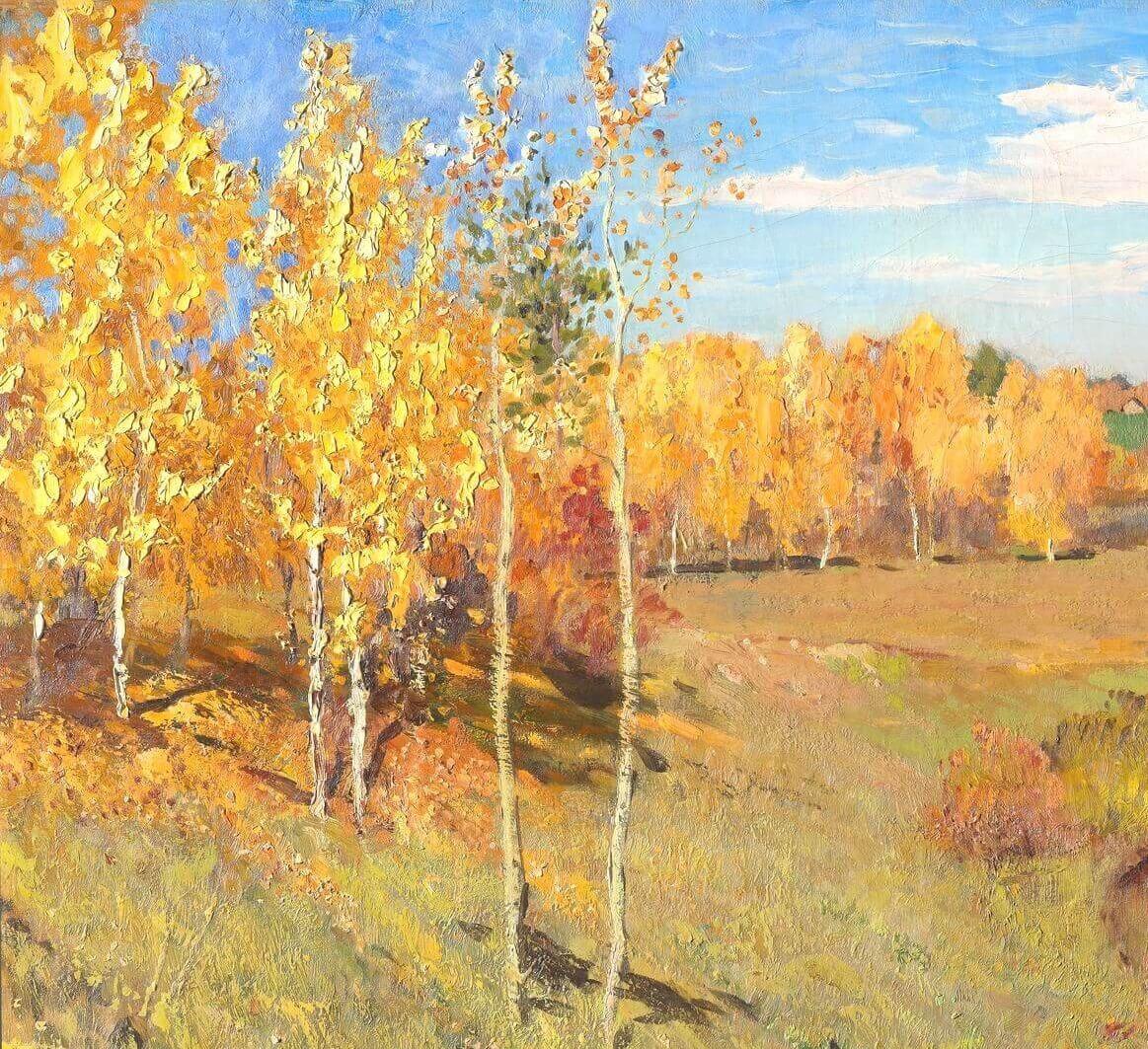
Levitan always wanted to show something more than just the relationship between light and shadow. He created pictorial poetry.
There are few external effects in his paintings, but there is a soul. With various hints, he evokes associations in the viewer and encourages reflection.
And Levitan was hardly a melancholic. After all, how then did he get such major works as "Birch Grove" or "Golden Autumn"?
He was highly sensitive and experienced a very wide range of emotions. Therefore, he could rejoice uncontrollably and be sad endlessly.
These emotions literally tore at his heart - he could not always cope with them. And it didn't last. The artist did not live to see his 40th birthday just a few weeks ...
But he left behind not just beautiful landscapes. It is a reflection of his soul. No, in fact, our souls.
***
Comments other readers see below. They are often a good addition to an article. You can also share your opinion about the painting and the artist, as well as ask the author a question.
Leave a Reply